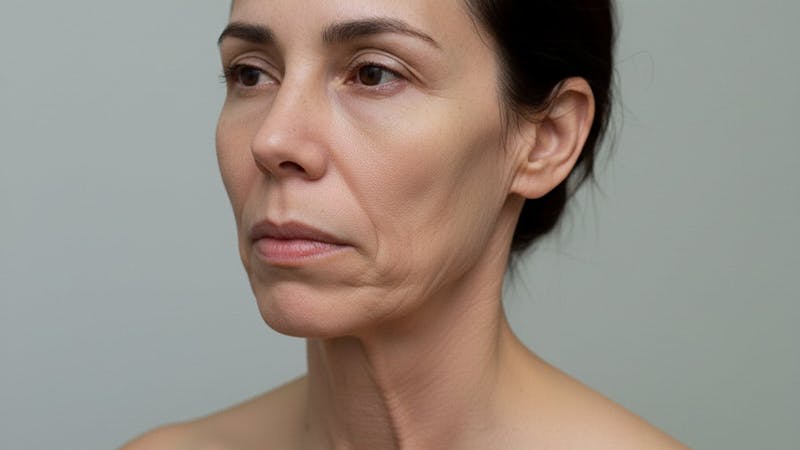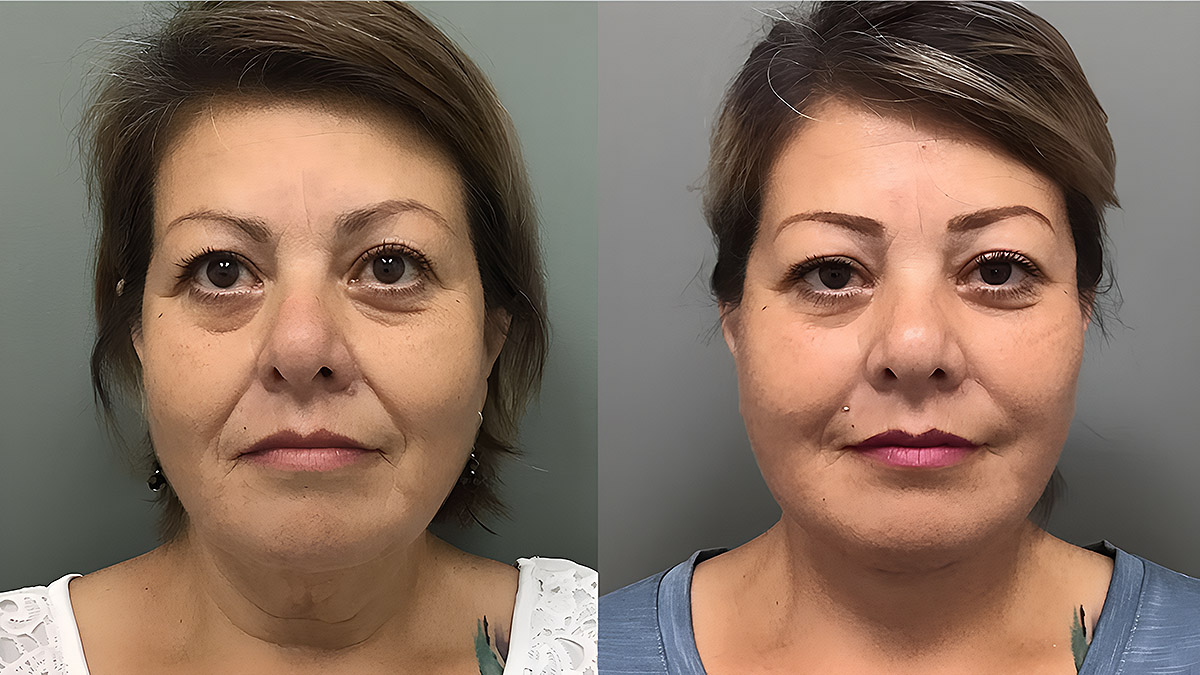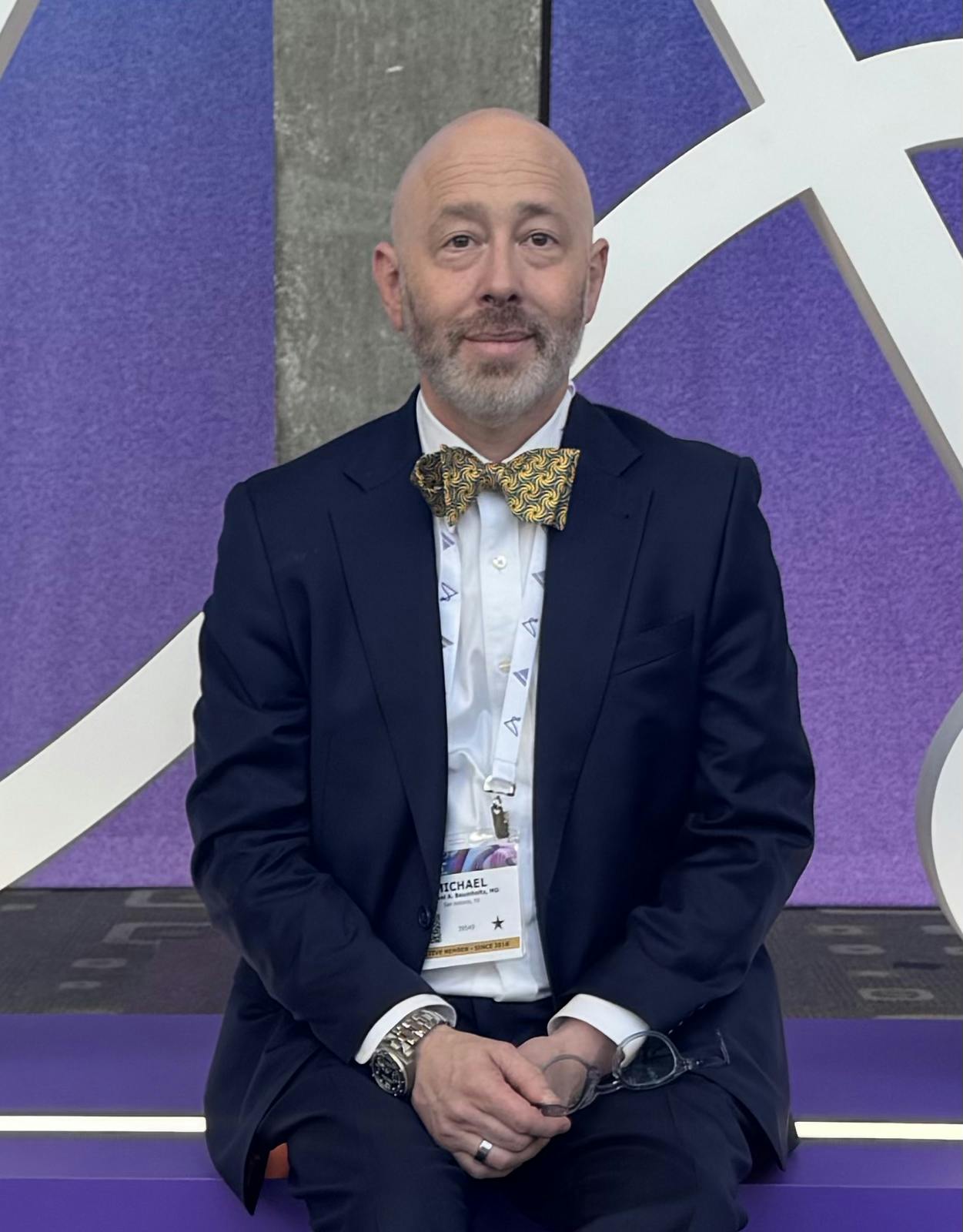
“Ozempic face” isn’t a diagnosis - it’s a nickname for how the face can change after rapid weight loss, especially from GLP-1 medications like Ozempic and Wegovy. As pounds come off quickly, the face often loses its soft internal support. Cheeks flatten, the jawline blurs, and skin looks looser than before weight loss began.
Many women tell Dr. Michael Baumholtz - Double Board-Certified Plastic Surgeon in San Antonio, TX - that they feel lighter and healthier, but their reflection looks older or tired. That emotional gap between feeling great and looking “off” is real. Dr. Baumholtz closes that gap with calm, anatomy-based planning and results that look natural, not “done”.
The Term vs. The Truth
The phrase “Ozempic face” spread on social media because the pattern is easy to recognize - but it’s not a medical condition. Rapid weight loss changes the scaffolding beneath the skin. Facial fat compartments deflate at different speeds and not always evenly. As that soft padding shrinks, the skin loses internal support; lines deepen, folds form, and the midface can look hollow.
Age, sun history, and genetics all play a role, especially in South Texas where year-round sunlight can accelerate visible skin change. Even bone structure matters - smaller chins and delicate cheeks can make normal volume loss appear more dramatic.
The key: determine whether the main issue is volume loss (hollowing) or tissue descent (sagging). Each has a different solution.
Dr. Baumholtz’s Approach: Volume vs. Position
Dr. Baumholtz evaluates each face through a simple, honest lens:
- Volume loss: hollows in the cheeks or temples, deeper under-eye grooves, a tired appearance.
- Tissue descent: jowls, marionette lines, neck banding, or a soft jawline.
If both are present - as they often are after rapid weight loss - he sequences treatment in the correct order: lift what has fallen first, then replace volume precisely where it’s missing. That strategy keeps changes believable and balanced.
When It’s Mostly Volume Loss
When cheeks deflate or the eyes look sunken, the fix is structured support, not bulk. Small, precise filler treatments restore contour and soften shadows so the face looks refreshed, not puffy.
- Dr. Baumholtz often uses Juvéderm family hyaluronic acid fillers for precision and reversibility.
- In select cases, fat transfer provides a soft, living touch once weight has stabilized.
“The goal isn’t to change who you are - it’s to help you recognize yourself again.” Dr. Baumholtz explains.
Recovery basics: fillers usually involve brief swelling or bruising; most people resume normal routines quickly. Fat transfer needs more patience as early fullness settles over weeks to months.
When It’s Mostly Sagging or Descent
If the issue is laxity - like jowls or neck heaviness - no amount of filler can replace a proper facelift or neck lift. A surgical lift repositions deeper layers (SMAS and platysma) so skin lies smoothly without tension.
Facelift planning is individualized. Dr. Baumholtz typically emphasizes:
- Deep-plane techniques for natural movement and definition when anatomy supports that choice.
- Incisions hidden along hairlines and ear creases.
- Tension-free closure to help avoid a “pulled” look.
Typical recovery arc: many patients manage light errands around week 2; swelling continues to settle over the first month. The goal is a cleaner jawline, a lighter neck, and expressions that remain authentically one’s own.
Surgical decisions are always case-by-case. There are risks with any procedure, and outcomes can vary. These plans are discussed in detail during consultation.
See Before and After Photos of Facelift Surgery
The Right Timing After Weight Loss
Rapid transformation means tissues are still adjusting. Planning procedures after weight stabilizes for several weeks or months produces better, longer-lasting results. If weight loss is ongoing but appearance is bothersome, Dr. Baumholtz may use light filler or medical-grade skincare to bridge the gap until a stable baseline is reached.
Skin Quality Still Matters
Skin is the envelope that shows the work beneath it. Daily broad-spectrum SPF, consistent medical-grade skincare, and protein-forward nutrition improve tone and elasticity. In the San Antonio sun, decades of exposure can create texture and pigment changes. Laser resurfacing, microneedling, or chemical peels can be staged before or after structural work to refine the finish - they do not replace lifting when descent is the issue.
The Emotional Side of Rapid Weight-Loss Changes
Many women feel conflicted - celebrating better health while struggling to recognize their face. Compliments about weight loss can sting when the mirror feels unkind. Dr. Baumholtz listens for both sides: pride in progress and grief for what’s changed. His care is designed to restore balance inside and out so confidence returns naturally.
What “Natural” Really Means
“Natural” isn’t about doing less - it’s about doing the right things, in the right order:
- Lift deeper layers so skin stays relaxed.
- Add subtle volume only where structure is thin.
- Keep proportions familiar and expressions genuine.
Results are reviewed in daylight and indoor lighting to ensure contours look believable beyond the exam room.
FAQs About Ozempic Face
Does heat or humidity affect swelling after fillers or a facelift?
Yes. San Antonio's heat can increase swelling, especially in the first two weeks. Dr. Baumholtz recommends staying cool indoors, head elevation, and short walks. GLP-1 use doesn't prevent treatment but should always be disclosed to the anesthesia team for peri-operative planning.
Can I plan surgery around Fiesta or Rodeo season?
Yes. Many patients schedule surgery 6-8 weeks before major events. Most feel comfortable at social gatherings by week 3, with bruising and most swelling improved by then.
Does salty or spicy Tex-Mex food make swelling worse?
Salt and alcohol can increase fluid retention and prolong swelling. For the first week, choose lower-sodium meals and skip alcohol. Favorites can return in moderation as healing stabilizes.
Do allergies affect recovery from facial surgery?
Seasonal allergies may increase congestion and mouth breathing, which can make early recovery less comfortable. Dr. Baumholtz may coordinate allergy care and adjust recovery with saline rinses, humidification, and sleep positioning.
Will rapid weight loss change how glasses fit on my face?
Yes. Thinner cheeks can cause frames to slip or leave marks. Frame contact points are checked during consultation, and subtle midface support can help.
When can I swim or float the Comal after surgery?
Avoid open water and pools until incisions are fully healed - often a few weeks post-op. After filler, light splashing is fine once needle sites are sealed (about a day). Use diligent sun protection after healing.
Why do grocery-store freezer lights make my jawline look harsher?
Cool LED lighting exaggerates shadows along the marionette and jowl areas. Treatment plans are designed to read well in bright, cool light (think H-E-B aisles), office lighting, and on video calls.
Medical References
- "Ozempic Face" in Plastic Surgery: A Systematic Review - https://pmc.ncbi.nlm.nih.gov/articles/PMC12232544/
- What to know about "Ozempic Face" - https://www.medicalnewstoday.com/articles/ozempic-face
- Semaglutide "Ozempic" Face and Implications in Cosmetic Dermatology - https://onlinelibrary.wiley.com/doi/abs/10.1002/der2.70003
- 'Ozempic Face': What It Is and How to Avoid It - https://health.clevelandclinic.org/ozempic-face
- GLP-1RA and the possible skin aging - https://pmc.ncbi.nlm.nih.gov/articles/PMC12370548/
- The Ethics of Ozempic and Wegovy - https://jme.bmj.com/content/early/2025/03/20/jme-2024-110374
- "Ozempic face": Aesthetic consequence, unintended physiological effects, and management - https://internationalhsr.com/index.php/ojs/article/view/49
Your Next Step in San Antonio
If your reflection feels out of sync with your energy after weight loss, start with a clear, private conversation.
- Request a consultation with Dr. Michael Baumholtz, Plastic Surgeon in San Antonio, TX.
- Expect straightforward education, anatomy-first planning, and timelines that fit real life in South Texas.
- Pricing is transparent before any commitment. The practice does not take insurance.
Further Reading
- Read more about Injectables
- Read Dr Baumholtz's Blog on Different Types of Face Lifts: Which One is the Best For You?
- Read Dr Baumholtz's Blog on What is the Best Age for a Facelift?



